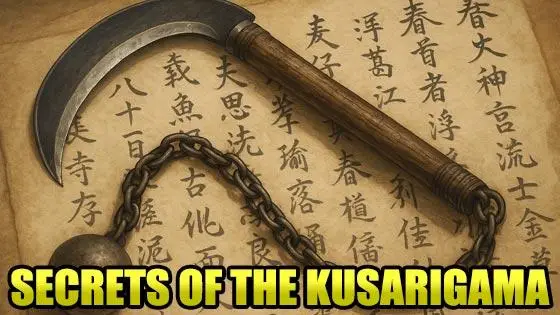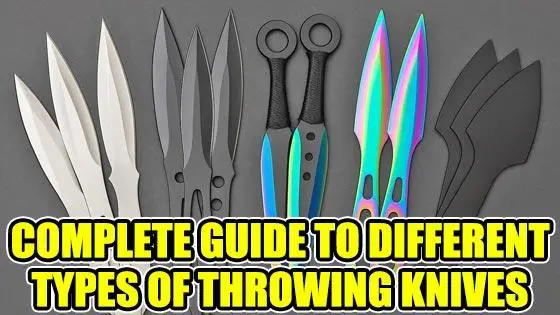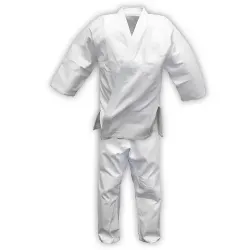BJJ Gi - Brazilian Jiu Jitsu Uniforms
-
From $59.95
The BJJ gi has its roots in traditional martial arts uniforms but has evolved over the years to meet the specific needs of Brazilian Jiu-Jitsu practitioners. Unlike other martial arts like Karate or Judo, where the uniform (gi) is typically designed for a more upright fighting style, the Brazilian jiu jitsu gi was designed to handle the unique demands of ground fighting, submissions, and grappling.
The history of Brazilian Jiu-Jitsu is intertwined with the history of the BJJ gi. The art itself was influenced by Japanese Judo, which was in turn influenced by Japanese traditional martial arts like Jujutsu. The Gracie family, particularly Helio Gracie, is often credited with developing the modern version of Brazilian Jiu-Jitsu by adapting Judo techniques for a more ground-based fighting style. It wasn't just the techniques that had to adapt, but also the jiu jitsu uniform itself. The BJJ uniform became more robust and functional as Brazilian Jiu-Jitsu developed into its own distinct martial art. Early on, Brazilian jiu jitsu gis were often made from the same materials used for Judo uniforms, but over time, manufacturers began to tailor the gi specifically for the demands of BJJ.
Today, the BJJ gi is made from a durable, heavyweight cotton fabric or canvas. These materials are chosen for their ability to withstand the intense grip battles, joint manipulations, and rolling on the mats that are part of Brazilian Jiu-Jitsu. This is especially important when you're engaged in ground fighting, where your gi is not just a piece of clothing, but a tool that your opponent can use against you. Unlike a karate gi, which is typically lighter and designed for more striking-based martial arts, or a Judo uniform, which is designed for throwing techniques, the BJJ gi is built to handle the constant pulling, grabbing, and tugging that happens in grappling and submission-based fighting.
A Brazilian jiu jitsu gi is typically composed of three main parts: the jacket, pants, and belt. The jacket is usually the heaviest part of the uniform, constructed from thick fabric to handle grips and pulls. It features a lapel, which is an essential part of the gi used for control during grappling. The pants are typically made from a lighter, more flexible fabric to allow for mobility, but they're also reinforced in key areas to ensure durability. The belt, of course, is a symbol of the practitioner's rank and skill level. The ranking system in BJJ is unique, with practitioners advancing through colored belts based on their experience and skill development, which is a contrast to other martial arts systems like Karate or Judo, where belt rankings are often more rigid and structured.
Jiu-jitsu uniforms are also highly customizable, with different brands offering variations in material, cut, and fit. Whether you're looking for a competition-ready BJJ gi that's light and fast for tournaments or a heavier, more durable gi for everyday training, there are options to suit every need. Over the years, innovation in BJJ uniforms has led to the development of specialized gis for different types of training, such as the competition gi, which is often lighter and more streamlined for performance, and the training gi, which might be heavier and designed to withstand the wear and tear of frequent practice.
One of the things that makes the BJJ gi so distinctive is how the sport relies on the gi itself for various techniques. In Brazilian Jiu-Jitsu, grips on the gi are a key element of the game. Whether you're using the lapel for a choke, the sleeves for a submission, or the pants for sweeps and control, the jiu-jitsu gi offers countless options for leveraging control and executing techniques. This is a key distinction between BJJ and other martial arts; while karate or Taekwondo may focus more on striking, BJJ emphasizes ground control, submissions, and technique, all of which require a highly functional, durable uniform.
There's also a notable difference between the BJJ gi and other types of martial arts gis in terms of cut and fit. Karate gis, for example, are typically looser and designed for a greater range of motion needed for striking. Judo uniforms, while similar in some respects to the BJJ gi, tend to have a more rigid design, which helps with throws and gripping in a standing position. The Brazilian jiu jitsu uniform, on the other hand, is designed to give you a snug, comfortable fit that allows for maximum mobility and durability when you're on the ground. Many BJJ practitioners prefer a gi that is a bit tighter to prevent an opponent from using it too easily against them during grappling. The cut of the BJJ uniform often includes reinforced stitching and padding in areas that experience the most stress during training, like the shoulders, knees, and crotch area.
When shopping for a jiu jitsu uniform, there are several factors to consider. First, you'll want to think about the material. Most BJJ gis come in either a single weave, double weave, or pearl weave fabric. Single weave is lighter and more breathable, making it ideal for warmer climates or for competitors who need speed. Double weave is thicker and more durable, but it can be heavier and less breathable. Pearl weave strikes a balance between the two, offering both durability and comfort. You'll also want to pay attention to the fit of the BJJ gi. Some brands offer a more athletic, tailored fit, while others have a looser, traditional cut. The right fit will largely depend on your personal preferences and body type.
Whether you're a beginner or a seasoned BJJ practitioner, having the right BJJ uniform is essential for your training. A high-quality jiu jitsu gi can make a significant difference in both comfort and performance, and understanding the history and unique qualities of the Brazilian jiu jitsu gi will give you a greater appreciation for this vital piece of martial arts gear.
What is the difference between a BJJ gi and a Judo gi?
The BJJ gi and the Judo gi are both essential pieces of equipment for grappling-based martial arts, but they are designed with different needs in mind. While they share some similarities, there are distinct differences that make each gi more suitable for its respective martial art.
Material and Construction:
Judo gis are typically made from a heavier, thicker fabric to withstand the intense grips and throwing techniques required in Judo. The Judo gi is built to be stiffer, especially in the jacket, to allow for stronger grip control when performing throws. This durability is crucial in a sport like Judo, where grips on the sleeves and collar are heavily utilized for a variety of throws and holds.
In contrast, BJJ gis are usually made from a more flexible fabric like ripstop or pearl weave that provides a balance of durability and mobility. The BJJ gi needs to accommodate a wide range of movements, especially when you're working on the ground, performing sweeps, submissions, or escapes. The jacket and pants in BJJ gis are often a little lighter than those in Judo, although they are still robust enough to withstand the constant pulling and tugging during sparring.
Fit and Cut:
The cut of a Judo gi is usually looser, particularly around the arms and legs. The looser fit allows for greater mobility when performing throwing techniques, which often require a wider range of motion and the ability to manipulate the opponent's body for throws.
On the other hand, the BJJ gi is designed to have a more tailored and fitted cut, particularly in the jacket and sleeves. This helps reduce the amount of material your opponent can grab onto during ground-based combat. The tighter fit also aids in performance and prevents the gi from becoming a liability during submission attempts. For example, the lapel of a BJJ gi is often reinforced and more structured than in a Judo gi, as the lapel is frequently used for grips and various submission techniques in Brazilian Jiu-Jitsu.
Purpose and Functionality:
A Judo gi is optimized for standing combat and throwing techniques. In Judo, much of the action takes place while the athletes are on their feet, attempting to throw the opponent onto the ground. The gi's design facilitates gripping the opponent's sleeves and collar, which is essential for performing these throws.
The BJJ gi, however, is specifically designed for the ground-based nature of Brazilian Jiu-Jitsu. While Judo does include ground fighting (newaza), BJJ gi training places more emphasis on submissions, sweeps, and positional control once the fight goes to the ground. The BJJ gi needs to withstand constant pulling, choking, and joint manipulation. For this reason, the fabric and structure of the gi are built to be flexible yet durable, with particular attention given to the lapel, sleeves, and pants, which are regularly used to execute various grips, submissions, and sweeps.
Differences in Training:
Judo practitioners typically use their gi to perform grips and throws that exploit the opponent's balance and control. The focus is often on using the gi to "break" the opponent's posture, making it easier to execute a throw.
In Brazilian Jiu-Jitsu, the gi is also a critical tool for control, but with an added focus on submissions like chokes, joint locks, and sweeps. The BJJ gi offers more opportunities to attack using grips, as well as defensive moves such as preventing an opponent from completing a submission by controlling the gi fabric.
In summary, while both BJJ gis and Judo gis share some basic features, such as the use of a jacket, pants, and belt, the BJJ gi is designed for the ground-based nature of Brazilian Jiu-Jitsu and incorporates a more fitted cut and flexible material. The Judo gi, on the other hand, is designed to handle the rigorous throws and grips typical of Judo, with a looser fit and stiffer material to facilitate those actions.
How do I choose the right size BJJ gi?
Choosing the right size BJJ gi is essential for comfort, mobility, and overall performance on the mats. A poorly fitting gi can hinder your movement and may even put you at a disadvantage during training and competition. Here's how to make sure you select the correct size for your needs:
Understand the Sizing System:
Most BJJ gi brands use a sizing system based on height and weight. The sizes are typically labeled with a letter and a number, such as A0, A1, A2, etc. The letter "A" stands for "Aikido" or "Adult," and the number corresponds to the approximate size range (e.g., A0 fits small to medium-sized practitioners, A1 fits medium to large practitioners, and A2 fits larger practitioners). However, size charts can vary slightly between brands, so it's important to check the specific manufacturer's guidelines when making your choice.
Measure Your Body:
To ensure the best fit, it's helpful to take your height and weight measurements. For example:
- A0 typically fits someone who is about 5'0" to 5'4" tall and weighs between 95-145 pounds.
- A1 fits someone who is around 5'4" to 5'10" tall and weighs 145-190 pounds.
- A2 typically fits someone who is around 5'10" to 6'0" tall and weighs 190-225 pounds.
- A3 is generally for individuals over 6'0" tall and weighing between 225-250 pounds.
These ranges are a good starting point, but as always, you should refer to the products sizing chart for more specific recommendations.
Consider Your Body Type:
Everyone's body type is different, so while height and weight are helpful, you should also consider how your body's proportions align with a particular gi size. For example:
- If you have longer arms or legs relative to your height, you may want to go with a slightly larger size to accommodate the extra length.
- If you're shorter but have a larger frame, you may need a larger size to ensure that the gi doesn't feel too tight around the chest or shoulders.
Fit Preferences:
The fit of your BJJ gi is also a matter of personal preference. Some practitioners prefer a looser, more relaxed fit, especially for comfort or when doing light training. Others prefer a snugger fit to limit the material an opponent can grab onto during grappling. If you're competing, most competitors prefer a tighter gi, as it's harder for opponents to use excessive material for grips or submissions.
Shrinkage Factor:
Keep in mind that most BJJ gis will shrink slightly after the first few washes, especially if you use hot water or dry the gi on high heat. This is particularly true for cotton gis. If you're on the fence between two sizes, it's often a good idea to choose the larger one, knowing that it will shrink to a more form-fitting size after a few washes. To minimize shrinkage, always follow the manufacturer's care instructions and consider air drying your gi or using a lower heat setting when machine drying.
Specialized Gi Fits:
Some BJJ gi brands offer different cuts and fits, such as athletic or competition fits. These cuts are designed to accommodate a more streamlined look and reduce excess fabric, helping competitors stay light on their feet and minimizing material that can be used against them. If you're training for competition, you might want to opt for a gi designed for that specific purpose.
In conclusion, choosing the right size BJJ gi involves understanding the size charts for the specific uniform, measuring your body, and considering your fit preferences. Don't forget that shrinkage can occur, so account for that when making your decision. With the right fit, your gi will feel more comfortable, perform better, and allow you to focus on your techniques rather than worrying about an ill-fitting uniform.
RECENTLY VIEWED






























